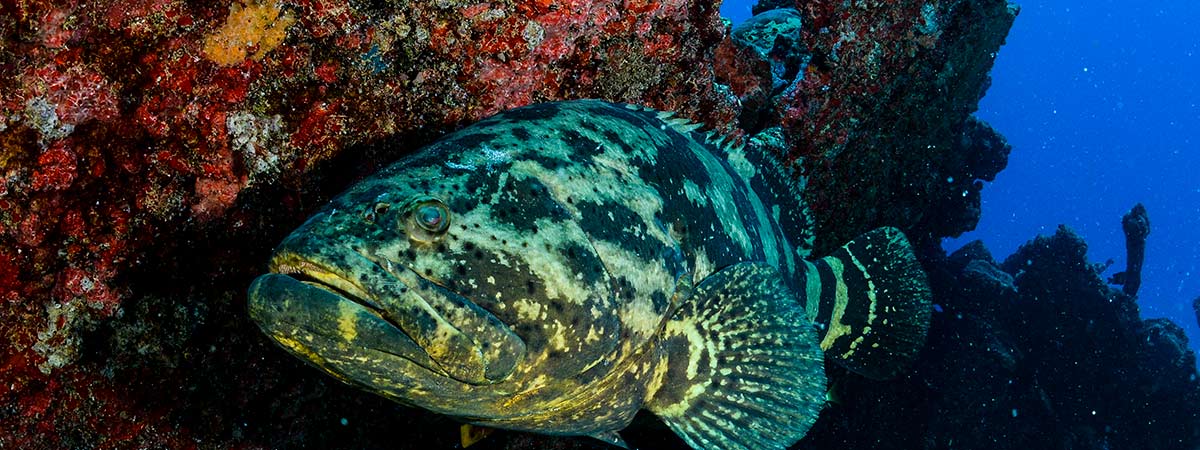Dr. Ralph Turingan
Bio
Research Interests
My research centers on the ecology and evolution of organismal design in vertebrates, using the fish-feeding system as a model. Fishes inhabit a wide range of habitats and feed on a variety of prey organisms. The functional morphology of the feeding mechanism in fishes is one of the most diverse in the animal kingdom. The ultimate goal of my research is to elucidate the roles of ecological and evolutionary processes in explaining organismal diversity.
In one of our major current projects, we explore the causal mechanisms that underlie mortality in marine fish larvae. We focus our attention at the critical period of first feeding, which is hypothesized to be a bottleneck in the recruitment of marine fishes. We investigate the consequences of the development of feeding functional design on the prey-capture performance of marine fish larvae. During early ontogeny, the feeding mechanism in marine fishes develops from a simple system that is mediated by the hyoid apparatus to a more complex mechanism that involves both the hyoid and opercular systems. However, we still do not know if this morphological transformation is one of the underlying causes of mortality in marine fish larvae through its influence on prey-capture performance.
We address several questions including: (1) How does the feeding mechanism develop during the early-life history stages of marine fishes? (2) How does the feeding mechanism of marine fish larvae work? (3) Does the kinematics of prey capture vary between the hyoid and the operculo-hyoid stages of lower-jaw depressing mechanisms? (4) Does the kinematics of prey capture vary among prey types, among species of marine fish larvae, and among early developmental stages (hyoid vs. hyoid + operculum stage) of fish. (5) How do early ontogenetic changes in biomechanical design of the prey-capture mechanism influence prey-capture performance in marine fish larvae? (6) Does feeding efficiency in marine fish larvae improve with the development of a more complex feeding mechanism through early ontogeny?
Other projects in our laboratory involve our continuing investigations of the intraspecitic and interspecific variation in feeding biomechanics and behavior in coral reef and estuarine fishes. Estuaries and lagoons comprise about 90% of the Atlantic and Gulf coasts of the United States. These habitats serve as nursery grounds for a number of fish species, including those of commercial and recreational importance. However, in spite of the biological importance of these coastal environments, anthropogenic activities continue to cause variations in physico-chemical factors that influence the physiology and behavior of fishes. Environmental changes in temperature, salinity, food supply, and microhabitat characteristics within these coastal ecosystems have created new problems for the local fish fauna. Our lack of understanding of how fishes solve these problems underscores the need for studies that explore the compensatory mechanisms (e.g., morphological and physiological) that enable fishes to counteract these environmental perturbations. One important physiological/behavioral process that is sensitive to environmental conditions is foraging performance in fishes. The role of phenotypic and physiological plasticity in creating a diverse feeding system in fishes is one of the least understood phenomena in fish biology.
The Indian River Lagoon (IRL), an estuarine environment on the east-central coast of Florida, consists of a high diversity of habitats, such as mangrove forests, salt marshes, freshwater tributaries, seagrass beds and estuaries, and supports one of the most diverse fish faunae in North America. The IRL provides a natural ecosystem for students in my laboratory to conduct experiments in the wild, that complements laboratory-based experiments, in order to explore the relationship between fish populations and their habitats, particularly those species that inhabit a variety of habitats
Selected Publications
- Krebs, J.M. and Turingan, R.G. 2002. Intraspecific variation in gape-prey size relationships and feeding success during early ontogeny in red drum, Sciaenops ocellatus. Environmental Biology of Fishes. In press.
- Huskey, S.H. and Turingan, R.G. 2001. Variation in prey-resource utilization and oral jaw gape between two populations of largemouth bass, Micropterus salmoides. Environmental Biology of Fishes 61:185-194.
- Durie, C.J. and Turingan, R.G. 2001. Relationship between durophagy and feeding biomechanics in gray triggerfish, Balistes capriscus: intraspecific variation in ecological morphology. Florida Scientist. 64(1):20-28.
- Cutwa, M., Turingan, R.G. 2000. Intralocality variation in food habit and feeding biomechanics in the sheepshead, Archosargus probatocephalus, with implications for the ecomorphology of fishes. Environmental Biology of Fishes 59:191-198.
- Wainwright, P.C. and Turingan, R.G.. 1997. Evolution of pufferfish inflation behavior. Evolution 5(2): 506-518.
- Turingan, R.G., Wainwright, P.C. and Hensley, D.A. 1995. Interpopulation variation in prey use and feeding biomechanics in triggerfishes. Oecologia. 102:296-304.
- Turingan, R.G. 1994. Ecomorphological relationships among Caribbean tetraodontiform fishes. J. Zool., London. 233:493-521.
- Turingan, R.G. and Wainwright, P.C. 1993. Morphological and functional bases of durophagy in the queen triggerfish, Balistes vetula (Pisces, Tetraodontiformes). J. Morph. 215:101-118.


 Give to Florida Tech
Give to Florida Tech 